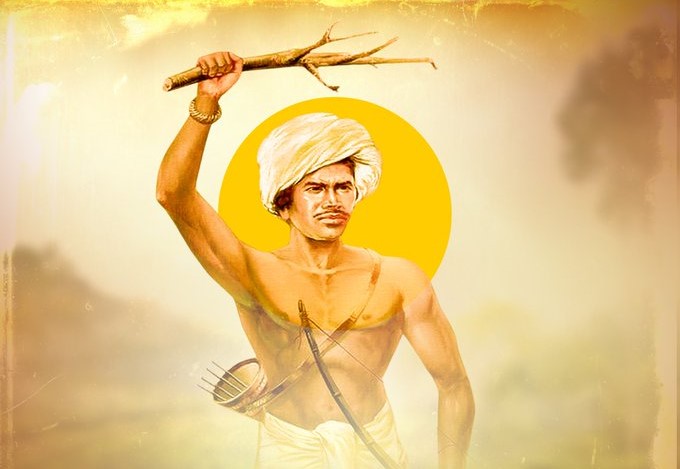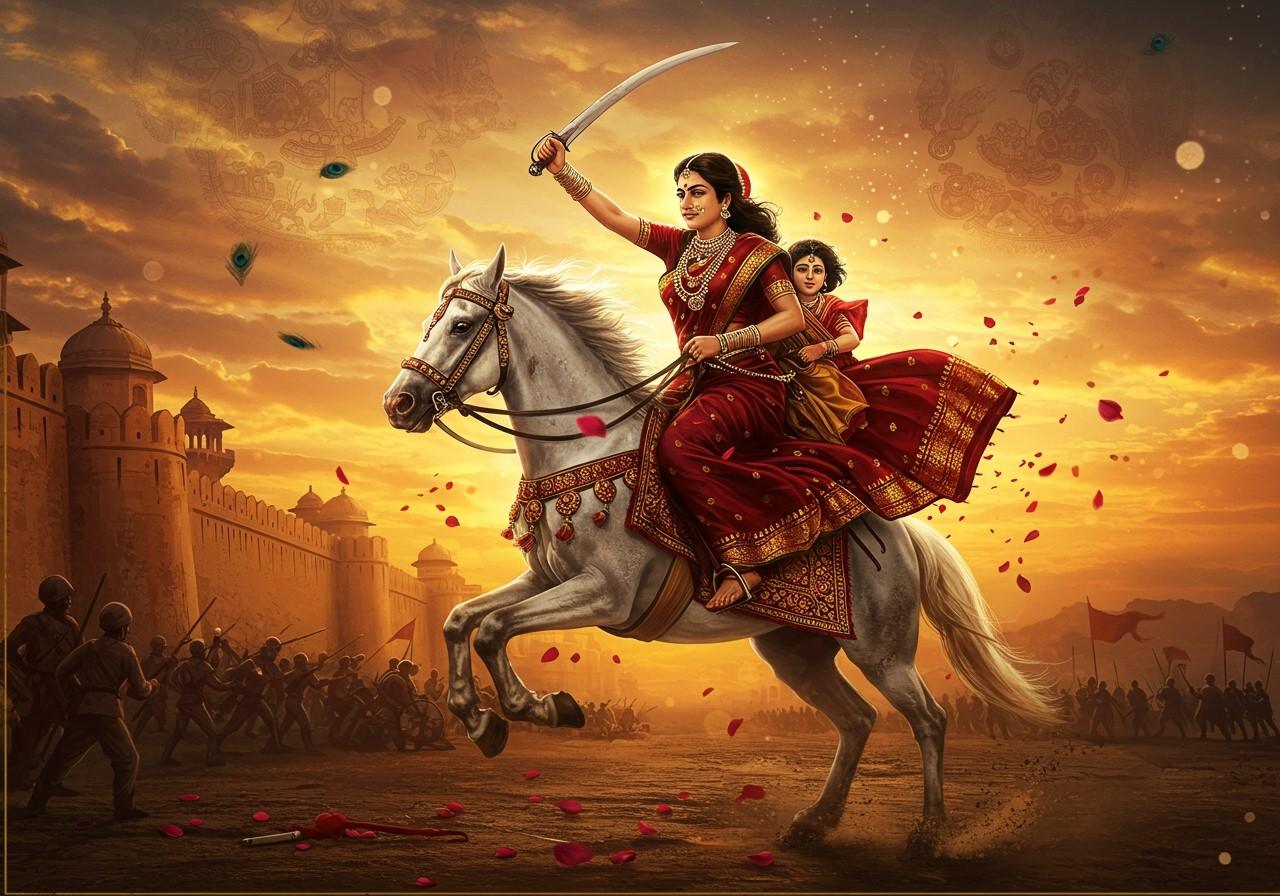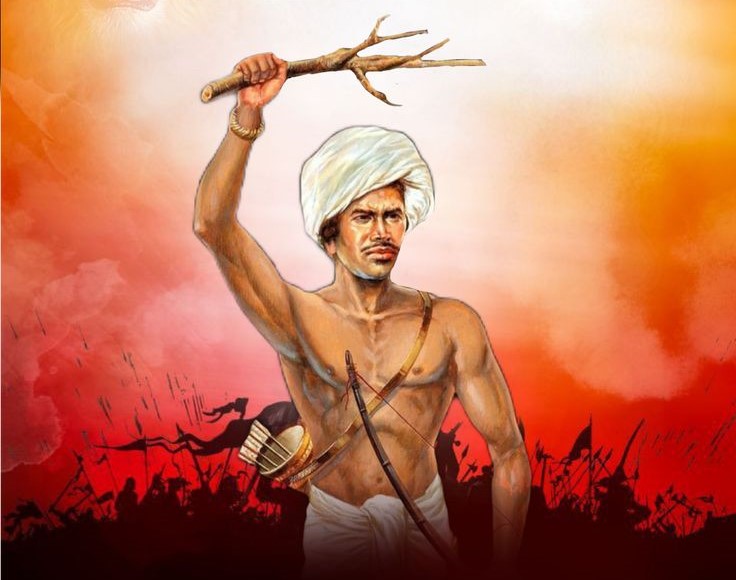By Dr. Bhupendra Kumar Sullere
The 125th death anniversary of Bhagwan Birsa Munda offers a moment to remember the life and vibrant legacy of a tribal revolutionary leader whose resistance against British colonial exploitation added a crucial chapter to India’s freedom struggle. Born amid the shifting socio-political dynamics of British rule in the late 19th century, Birsa emerged as a prominent leader who fought for the rights and dignity of tribal communities.
About Birsa Munda
Birsa Munda was born on November 15, 1875, in Ulihatu, a village on the Chotanagpur Plateau, which is now in Jharkhand. Traditionally inhabited by the Munda tribe, this region had fallen into unrest due to British colonial policies. Before British intervention, the Mundas practiced a community-based land ownership system called "Khuntkatti," in which land was equally distributed without interference from landlords. However, the Permanent Settlement Act of 1793 introduced the Zamindari system for the first time, creating a class of landlords who claimed ownership over tribal lands and collected heavy revenues.
This colonial policy fundamentally disrupted the socio-economic structure of the tribals, reducing them to mere tenants and laborers. The British also imposed the practice of "begar" (forced unpaid labor), greatly increasing their exploitation. Additionally, the growing influence of Christian missionaries, supported by colonial powers, endangered the indigenous customs and rituals of the Mundas. These factors collectively fuelled widespread resentment, paving the way for Birsa Munda to emerge as a leader and symbol of resistance.
The Munda Rebellion
A key feature of Birsa Munda’s legacy is his role as the leader of the so-called Munda Rebellion, also known as Ulgulan, which literally means "The Great Tumult." This rebellion, which occurred between 1899–1900, was a direct response to the oppressive policies and practices of the British and their allies, including landlords and moneylenders. Birsa’s vision of re-establishing the Munda Raj, or independent tribal governance, deeply resonated with his followers who had lost control over their land and autonomy.
The Ulgulan movement included guerrilla tactics. Birsa inspired tribals to refuse paying taxes, popularized non-cooperation with British laws, and demanded the destruction of colonial symbols of power. His leadership was not confined to armed resistance—he also worked for the re-evaluation of tribal identity and cultural practices, which he believed were central to their socio-political unity. His call to followers to "shape your own future" reflected his vision for a free and self-reliant tribal society.
Despite the initial strength and popularity of the movement, the British ultimately suppressed the rebellion through superior military power. Birsa was captured on March 3, 1900, while resting with his guerrilla fighters in the forests of Jamkopai. He died under mysterious circumstances in British custody on June 9, 1900, at just 25 years of age. Although brief, the rebellion left a deep and lasting impact.
Post-Rebellion Developments
Following the Munda Rebellion, there were some revolutionary changes in colonial policy that addressed at least a few tribal grievances. One of the most significant outcomes was the enactment of the Chotanagpur Tenancy Act of 1908, which legally recognized the traditional tribal control over land and prohibited its transfer to non-tribals. This was a historic decision that aimed to protect tribal land rights and prevent future alienation.
The rebellion also exposed the exploitative nature of "begar" and forced the colonial administration to rethink its strategies for controlling tribal areas. As a result, more acceptable and just policies were considered to reduce the widespread discontent among the tribal population.
Birsa Munda’s Broader Contributions
Birsa Munda's contribution extended beyond leading the Munda Rebellion. He was also a significant social reformer within his community. He was determined to free his people from superstition and regressive practices. He encouraged his followers to give up animal sacrifice, refrain from begging, and instead rely on agriculture and hard work.
Through the Birsait Faith Movement, Birsa effectively countered the socio-cultural degradation brought by colonialism and missionary work. He called for the worship of one god and promoted a form of religious and social revival that would allow his followers to reclaim their cultural identity and resist foreign dominance. His emphasis on purity, hard work, and belief in tradition deeply resonated with the tribal people, who revered him as a divine incarnation, calling him "Bhagwan" (God) and "Dharti Abba" (Father of the Earth).
Legacy of Birsa Munda
Birsa Munda’s legacy continues to inspire and organize tribal communities across India. His life and struggle are commemorated annually on November 15, his birth anniversary, celebrated as Tribal Pride Day (Janjatiya Gaurav Diwas). This day honors the service and sacrifice of tribal leaders and promotes the protection of tribal culture and rights in modern India.
His legacy has also influenced the broader Indian discourse on tribal rights and justice. He fought against land alienation and demanded socio-economic autonomy, which formed the foundation for policies aimed at supporting tribal communities. Birsa remains a symbol of resistance against oppression and a champion of justice and equality for tribal people.
What Are Tribal Movements?
Historically, tribal movements have centered on resisting external intrusions and exploitative practices. These movements have been driven by the need to protect the land, resources, and cultural identity of tribal people—first from colonial officials and later from post-colonial state policies. Tribal movements have played a critical role in shaping laws and policies that recognize tribal land rights and ensure social justice.
Major Tribal Uprisings in Colonial India
Apart from the Munda Rebellion, several other tribal uprisings have left a lasting impact on colonial India's history.
For instance, the Santhal Rebellion of 1855–56 was a major mass uprising in the Santhal region against the oppression of landlords and moneylenders. Other important movements include the Bhil Rebellion and the Gond Uprising, which were responses to British policies that threatened tribal sovereignty and livelihoods. Though each of these movements had unique causes and contexts, they all shared a common goal: to resist exploitation and reclaim the rights of tribal communities over their land and resources.
Why Is Tribal Pride Day Celebrated?
Tribal Pride Day seeks to bring together the rich cultural heritage and indomitable spirit of India’s tribal communities. It also aims to acknowledge the contributions of tribal leaders in Indian history and their role in shaping the socio-economic fabric of the nation. On this day, awareness is raised about the ongoing issues faced by tribal populations, and campaigns are run for policies that are inclusive and development-oriented.
Key Government Schemes for PVTG Welfare
1. PM-JANMAN (Pradhan Mantri Janjatiya Adhikar Nyaya Maha Abhiyan)
This is a comprehensive initiative aimed at addressing the diverse challenges faced by Particularly Vulnerable Tribal Groups (PVTGs). PM-JANMAN provides legal aid and ensures land and natural resource rights for tribals. It improves access to education and healthcare and focuses on enriching tribal cultural heritage with respect and inclusion.
2. Pradhan Mantri Vanbandhu Kalyan Yojana
This scheme promotes the overall development of tribal areas by building infrastructure in education, health, and livelihoods. It focuses on sustainable development and capacity building to enable tribal communities to achieve socio-economic progress.
3. Minimum Support Price for Minor Forest Produce (MSP for MFP)
This scheme ensures fair and remunerative prices for tribal gatherers for their forest products. By offering a guaranteed MSP and promoting cooperative marketing, it aims to eliminate exploitative middlemen and improve tribal incomes.
4. Development of PVTGs
With specially earmarked funds, this program focuses on the housing, education, and healthcare needs of PVTGs. It also provides skill-building opportunities to improve their livelihoods and foster overall socio-economic development.
5. Van Dhan Vikas Yojana
Aimed at value addition, branding, and marketing of minor forest produce, this scheme supports the establishment of Van Dhan Vikas Kendras. It promotes entrepreneurship among tribal communities by supporting processing and value addition of forest products, thus empowering them economically and socially.
The life and legacy of Birsa Munda symbolize the ongoing struggle for justice, dignity, and rights of India's tribal people. His leadership in the Munda Rebellion and his efforts toward social reform have left an indelible mark on Indian history. His mission must continue through movements and policies that strengthen and advance tribal rights. Birsa Munda’s dream—a just and equitable society—remains a guiding light for all those who continue to fight against oppression. His legacy is not only a reminder of past struggles but also a lasting source of inspiration for future generations committed to justice, equality, and cultural preservation.






